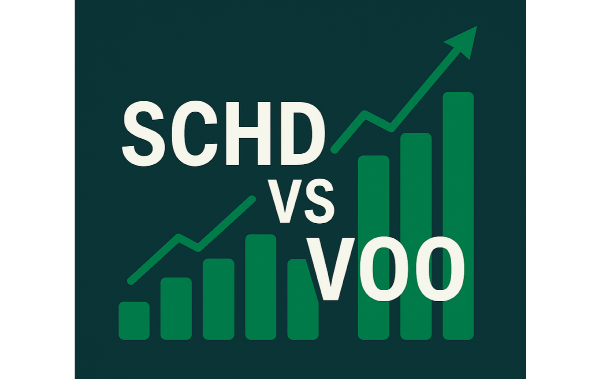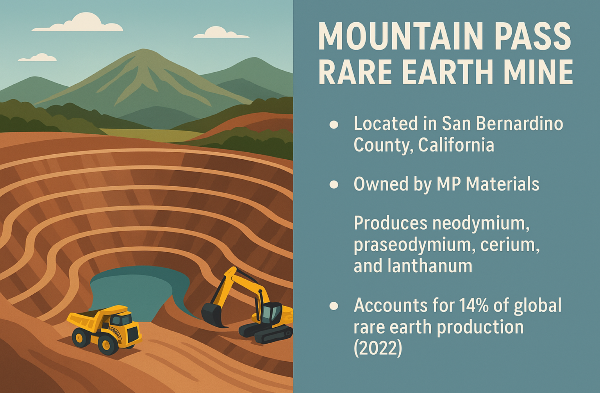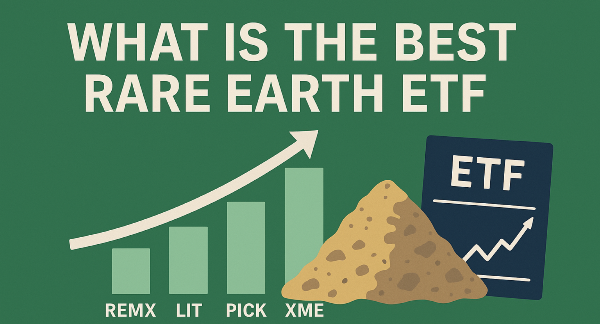Introduction
SCHD and VOO are two widely recognized ETFs, each catering to different investment strategies. SCHD, the Schwab U.S. Dividend Equity ETF, focuses on dividend-paying stocks, offering investors a steady income stream alongside potential capital appreciation. VOO, the Vanguard S&P 500 ETF, provides broad exposure to the largest U.S. companies, emphasizing market-wide growth rather than dividend yield. Investors must consider factors such as dividend yield, sector allocation, and long-term growth potential when deciding which ETF aligns best with their financial goals.
What Is SCHD?
SCHD, the Schwab U.S. Dividend Equity ETF, is designed to track the performance of the Dow Jones U.S. Dividend 100 Index. This index consists of 100 high-quality dividend-paying stocks selected based on financial strength and consistent dividend growth. SCHD follows a passive investment strategy, ensuring that holdings align with the index without frequent portfolio adjustments. With a low expense ratio of 0.06 percent, SCHD provides cost-efficient exposure to dividend-focused equities.
The fund’s portfolio composition emphasizes companies with a strong history of dividend payments and solid financial fundamentals. Investing in SCHD provides several benefits, particularly for those seeking income generation and value-oriented investing. Dividend-paying stocks tend to be less volatile than growth stocks, offering stability during market fluctuations.
What Is VOO?
VOO, the Vanguard S&P 500 ETF, is a passively managed fund designed to track the performance of the S&P 500 index. This index consists of 500 of the largest publicly traded companies in the United States, spanning multiple industries such as technology, healthcare, and financial services. VOO provides investors with broad exposure to the U.S. stock market, offering a cost-effective way to participate in the growth of established businesses.
The portfolio structure of VOO reflects the composition of the S&P 500, with sector weightings that align with market trends. Technology remains the dominant sector, accounting for approximately 26 percent of the fund’s holdings. Investors benefit from the fund’s ability to mirror market movements without the need for active stock selection. Its liquidity and low fees make it an efficient choice for investors looking to build a stable portfolio.
Dividend Yield and Income Potential
SCHD offers a significantly higher dividend yield compared to VOO, making it a preferred choice for income-focused investors. SCHD’s yield typically ranges around 3.94%, whereas VOO’s dividend yield is lower at approximately 1.29%. This difference stems from SCHD’s focus on companies with strong dividend histories, while VOO tracks the broader S&P 500. The stability and reliability of dividend payments from SCHD holdings contribute to its attractiveness for long-term investors.
Holdings such as Coca-Cola, Home Depot, and Cisco Systems provide steady income streams, reinforcing SCHD’s role as a dependable dividend ETF. VOO, while offering dividends, does not prioritize high-yield stocks, resulting in lower overall income generation. Income-focused investors must weigh several factors when choosing between SCHD and VOO.
Historical Performance and Growth Trends
SCHD and VOO have demonstrated strong long-term performance, though their returns differ due to their investment strategies. Over the past decade, SCHD has delivered an annualized return of 10.65%, while VOO has achieved a higher return of 12.86%. This difference is primarily due to VOO’s focus on large-cap stocks, while SCHD emphasizes on dividend-paying companies, provides more stable returns but may lag behind VOO in periods of rapid market expansion. Risk and volatility comparisons highlight key distinctions between these ETFs. SCHD has a maximum drawdown of -33.37%, whereas VOO’s worst decline was -33.99%.
Additionally, SCHD has a daily standard deviation of 16.37%, compared to VOO’s 19.37%, indicating that SCHD experiences slightly lower price fluctuations. Market cycles significantly impact the performance of both funds. During economic expansions, VOO benefits from the rapid growth of large-cap stocks, often outperforming SCHD. Historical data indicates that VOO has maintained steadier returns across different market conditions, making it a reliable choice for investors seeking long-term growth.
Expense Ratios and Fund Costs
SCHD and VOO both maintain low expense ratios, making them cost-efficient options for long-term investors. These low fees ensure that a minimal portion of investment returns is allocated to fund management costs, allowing investors to maximize their earnings over time. Investors prioritizing cost efficiency should consider these low-fee funds to enhance portfolio growth while minimizing unnecessary expenses. The effect of fund costs on long-term returns is significant, as even small differences in expense ratios can compound over time.
SCHD’s slightly higher expense ratio is justified by its focus on dividend-paying stocks, which provide consistent income alongside capital appreciation.
VOO, with its broader market exposure, benefits from lower costs while maintaining strong long-term performance. Liquidity and trading considerations also play a role in fund selection. Both SCHD and VOO are highly liquid ETFs, meaning they experience high trading volume and tight bid-ask spreads. VOO, which tracks the S&P 500, tends to have slightly higher trading volume than SCHD.
Sector Allocation and Portfolio Composition
SCHD and VOO have distinct sector allocations due to their differing investment strategies. SCHD focuses on dividend-paying stocks, leading to a concentration in sectors such as financials, consumer staples, and industrials. VOO, on the other hand, tracks the S&P 500, which has a higher allocation to technology and consumer discretionary stocks. This sector composition allows VOO to capture broader market trends, benefiting from the growth of large-cap companies in innovative industries. The growth versus value focus in fund holdings further differentiates SCHD and VOO.
SCHD prioritizes value-oriented stocks with strong dividend histories, favoring companies that generate steady cash flow and maintain financial stability. VOO, with its exposure to the largest U.S. companies, includes both growth and value stocks, offering a balanced investment strategy. SCHD’s emphasis on dividend-heavy industries provides resilience during market downturns, as companies in these sectors tend to maintain stable earnings.
However, this focus may cause SCHD to underperform during periods of rapid economic expansion. VOO’s diversified sector allocation ensures participation in various market cycles, benefiting from both defensive and high-growth industries.
Risk Factors and Market Sensitivity
Economic downturns affect SCHD and VOO differently due to their distinct investment strategies. SCHD, which focuses on dividend-paying stocks, tends to be more resilient during market declines, as companies with strong dividend histories often maintain stable earnings. VOO, tracking the S&P 500, experiences broader market fluctuations, with large-cap stocks reacting sharply to economic shifts. Sensitivity to interest rate changes and inflation plays a crucial role in determining the performance of both ETFs.
Investors should monitor Federal Reserve policies and inflation trends to anticipate potential risks. Risk mitigation strategies help investors manage exposure to market fluctuations when holding SCHD or VOO. Diversifying across asset classes, such as bonds or international equities, can reduce portfolio volatility. Regular portfolio rebalancing ensures alignment with financial goals, minimizing the impact of economic downturns.
Which ETF Is Better for Different Investment Goals?
Choosing between growth and dividend-focused investing depends on an investor’s financial priorities. SCHD is designed for those seeking consistent income through dividends, making it ideal for retirees or conservative investors who prioritize cash flow. VOO, on the other hand, focuses on broad market growth by tracking the S&P 500, offering exposure to large-cap companies with strong expansion potential. Evaluating financial objectives and risk tolerance is crucial when selecting between SCHD and VOO. SCHD’s emphasis on dividend-paying stocks provides stability, reducing volatility compared to growth-focused funds.
VOO, with its exposure to high-growth sectors like technology, experiences greater price fluctuations but offers higher long-term returns. Portfolio allocation strategies using SCHD or VOO should balance risk and reward based on market conditions. Additionally, combining these ETFs with fixed-income assets or international equities enhances portfolio resilience.
Conclusion
SCHD and VOO cater to distinct investment strategies, with SCHD prioritizing stable dividend income and VOO focusing on broad market growth. Investors seeking consistent cash flow and lower volatility may find SCHD more suitable, while those aiming for long-term capital appreciation may prefer VOO’s diversified exposure to large-cap stocks.
Both ETFs offer low expense ratios and strong historical performance, making them reliable choices for different financial goals. By evaluating sector allocations, risk tolerance, and income needs, investors can determine which fund best aligns with their investment strategy, ensuring optimal portfolio performance over time.




























Introduction
SCHD and VOO are two widely recognized ETFs, each catering to different investment strategies. SCHD, the Schwab U.S. Dividend Equity ETF, focuses on dividend-paying stocks, offering investors a steady income stream alongside potential capital appreciation. VOO, the Vanguard S&P 500 ETF, provides broad exposure to the largest U.S. companies, emphasizing market-wide growth rather than dividend yield. Investors must consider factors such as dividend yield, sector allocation, and long-term growth potential when deciding which ETF aligns best with their financial goals.
What Is SCHD?
SCHD, the Schwab U.S. Dividend Equity ETF, is designed to track the performance of the Dow Jones U.S. Dividend 100 Index. This index consists of 100 high-quality dividend-paying stocks selected based on financial strength and consistent dividend growth. SCHD follows a passive investment strategy, ensuring that holdings align with the index without frequent portfolio adjustments. With a low expense ratio of 0.06 percent, SCHD provides cost-efficient exposure to dividend-focused equities.
The fund’s portfolio composition emphasizes companies with a strong history of dividend payments and solid financial fundamentals. Investing in SCHD provides several benefits, particularly for those seeking income generation and value-oriented investing. Dividend-paying stocks tend to be less volatile than growth stocks, offering stability during market fluctuations.
What Is VOO?
VOO, the Vanguard S&P 500 ETF, is a passively managed fund designed to track the performance of the S&P 500 index. This index consists of 500 of the largest publicly traded companies in the United States, spanning multiple industries such as technology, healthcare, and financial services. VOO provides investors with broad exposure to the U.S. stock market, offering a cost-effective way to participate in the growth of established businesses.
The portfolio structure of VOO reflects the composition of the S&P 500, with sector weightings that align with market trends. Technology remains the dominant sector, accounting for approximately 26 percent of the fund’s holdings. Investors benefit from the fund’s ability to mirror market movements without the need for active stock selection. Its liquidity and low fees make it an efficient choice for investors looking to build a stable portfolio.
Dividend Yield and Income Potential
SCHD offers a significantly higher dividend yield compared to VOO, making it a preferred choice for income-focused investors. SCHD’s yield typically ranges around 3.94%, whereas VOO’s dividend yield is lower at approximately 1.29%. This difference stems from SCHD’s focus on companies with strong dividend histories, while VOO tracks the broader S&P 500. The stability and reliability of dividend payments from SCHD holdings contribute to its attractiveness for long-term investors.
Holdings such as Coca-Cola, Home Depot, and Cisco Systems provide steady income streams, reinforcing SCHD’s role as a dependable dividend ETF. VOO, while offering dividends, does not prioritize high-yield stocks, resulting in lower overall income generation. Income-focused investors must weigh several factors when choosing between SCHD and VOO.
Historical Performance and Growth Trends
SCHD and VOO have demonstrated strong long-term performance, though their returns differ due to their investment strategies. Over the past decade, SCHD has delivered an annualized return of 10.65%, while VOO has achieved a higher return of 12.86%. This difference is primarily due to VOO’s focus on large-cap stocks, while SCHD emphasizes on dividend-paying companies, provides more stable returns but may lag behind VOO in periods of rapid market expansion. Risk and volatility comparisons highlight key distinctions between these ETFs. SCHD has a maximum drawdown of -33.37%, whereas VOO’s worst decline was -33.99%.
Additionally, SCHD has a daily standard deviation of 16.37%, compared to VOO’s 19.37%, indicating that SCHD experiences slightly lower price fluctuations. Market cycles significantly impact the performance of both funds. During economic expansions, VOO benefits from the rapid growth of large-cap stocks, often outperforming SCHD. Historical data indicates that VOO has maintained steadier returns across different market conditions, making it a reliable choice for investors seeking long-term growth.
Expense Ratios and Fund Costs
SCHD and VOO both maintain low expense ratios, making them cost-efficient options for long-term investors. These low fees ensure that a minimal portion of investment returns is allocated to fund management costs, allowing investors to maximize their earnings over time. Investors prioritizing cost efficiency should consider these low-fee funds to enhance portfolio growth while minimizing unnecessary expenses. The effect of fund costs on long-term returns is significant, as even small differences in expense ratios can compound over time. SCHD’s slightly higher expense ratio is justified by its focus on dividend-paying stocks, which provide consistent income alongside capital appreciation.
VOO, with its broader market exposure, benefits from lower costs while maintaining strong long-term performance. Liquidity and trading considerations also play a role in fund selection. Both SCHD and VOO are highly liquid ETFs, meaning they experience high trading volume and tight bid-ask spreads. VOO, which tracks the S&P 500, tends to have slightly higher trading volume than SCHD.
Sector Allocation and Portfolio Composition
SCHD and VOO have distinct sector allocations due to their differing investment strategies. SCHD focuses on dividend-paying stocks, leading to a concentration in sectors such as financials, consumer staples, and industrials. VOO, on the other hand, tracks the S&P 500, which has a higher allocation to technology and consumer discretionary stocks. This sector composition allows VOO to capture broader market trends, benefiting from the growth of large-cap companies in innovative industries. The growth versus value focus in fund holdings further differentiates SCHD and VOO.
SCHD prioritizes value-oriented stocks with strong dividend histories, favoring companies that generate steady cash flow and maintain financial stability. VOO, with its exposure to the largest U.S. companies, includes both growth and value stocks, offering a balanced investment strategy. SCHD’s emphasis on dividend-heavy industries provides resilience during market downturns, as companies in these sectors tend to maintain stable earnings.
However, this focus may cause SCHD to underperform during periods of rapid economic expansion. VOO’s diversified sector allocation ensures participation in various market cycles, benefiting from both defensive and high-growth industries.
Risk Factors and Market Sensitivity
Economic downturns affect SCHD and VOO differently due to their distinct investment strategies. SCHD, which focuses on dividend-paying stocks, tends to be more resilient during market declines, as companies with strong dividend histories often maintain stable earnings. VOO, tracking the S&P 500, experiences broader market fluctuations, with large-cap stocks reacting sharply to economic shifts. Sensitivity to interest rate changes and inflation plays a crucial role in determining the performance of both ETFs.
Investors should monitor Federal Reserve policies and inflation trends to anticipate potential risks. Risk mitigation strategies help investors manage exposure to market fluctuations when holding SCHD or VOO. Diversifying across asset classes, such as bonds or international equities, can reduce portfolio volatility. Regular portfolio rebalancing ensures alignment with financial goals, minimizing the impact of economic downturns.
Which ETF Is Better for Different Investment Goals?
Choosing between growth and dividend-focused investing depends on an investor’s financial priorities. SCHD is designed for those seeking consistent income through dividends, making it ideal for retirees or conservative investors who prioritize cash flow. VOO, on the other hand, focuses on broad market growth by tracking the S&P 500, offering exposure to large-cap companies with strong expansion potential. Evaluating financial objectives and risk tolerance is crucial when selecting between SCHD and VOO. SCHD’s emphasis on dividend-paying stocks provides stability, reducing volatility compared to growth-focused funds.
VOO, with its exposure to high-growth sectors like technology, experiences greater price fluctuations but offers higher long-term returns. Portfolio allocation strategies using SCHD or VOO should balance risk and reward based on market conditions. Additionally, combining these ETFs with fixed-income assets or international equities enhances portfolio resilience.
Conclusion
SCHD and VOO cater to distinct investment strategies, with SCHD prioritizing stable dividend income and VOO focusing on broad market growth. Investors seeking consistent cash flow and lower volatility may find SCHD more suitable, while those aiming for long-term capital appreciation may prefer VOO’s diversified exposure to large-cap stocks.
Both ETFs offer low expense ratios and strong historical performance, making them reliable choices for different financial goals. By evaluating sector allocations, risk tolerance, and income needs, investors can determine which fund best aligns with their investment strategy, ensuring optimal portfolio performance over time.